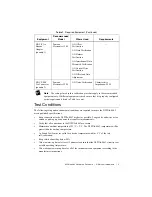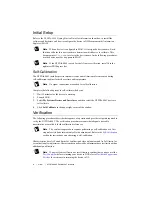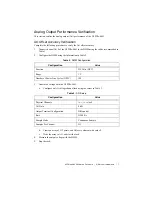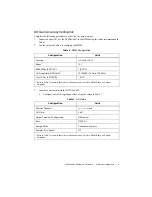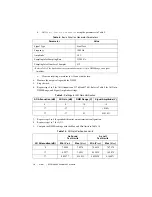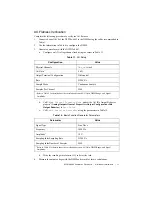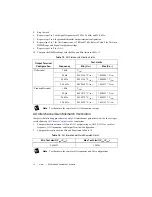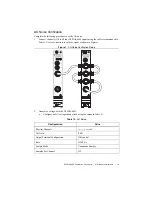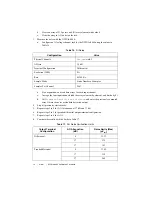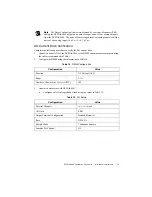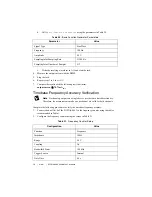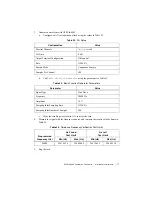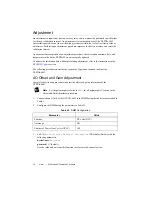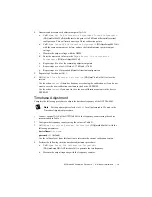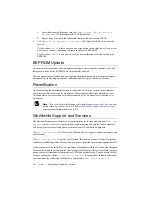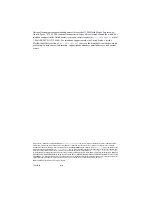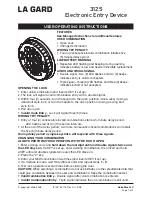
NI PXIe-4463 Calibration Procedure
|
© National Instruments
|
19
4.
Generate and measure each adjustment point for AO.
a.
Call
DAQmx Get DSA Calibration Adjustment Points Polymorphic
(DAQmxGet4463CalAdjustPoints) with gain set to 0 dB and differential terminal
configuration. This will return an array of three calibration points.
b.
Call
DAQmx Setup DSA Calibration Polymorphic
(DAQmxSetup4463Cal)
with the same parameters as before, and use the first adjustment point as output
voltage.
c.
Measure the output voltage with the DMM.
d.
Enter the measured value into the
DAQmx Adjust DSA Calibration
Polymorphic
(DAQmxAdjust4463Cal).
e.
Repeat steps b to d for the remaining adjustment points.
f.
Repeat steps a to e for AO Gain of -17 dB and -37 dB.
g.
Repeat steps a to f for pseudodifferential terminal configuration.
5.
Repeat step 4 for channel AO 1.
6.
Call
DAQmx Close External Calibration
(DAQmxCloseExtCal) to close the
session.
Use the action
cancel
if there has been any error during the calibration or if you do not
want to save the new calibration constants in the device EEPROM.
Use the action
commit
if you want to save the new calibration constants in the device
EEPROM.
Timebase Adjustment
Complete the following procedure to adjust the timebase frequency of the NI PXIe-4463.
Note
Set the polymorphic selector to
4463
for all polymorphic VIs used in the
Timebase Adjustment procedure.
1.
Connect channel AO 0 of the NI PXIe-4463 to the frequency counter using the cables
recommended in Table 1.
2.
Configure the frequency counter using the values in Table 21.
3.
Call
DAQmx Initialize External Calibration
(DAQmxInitExtCal) with the
following parameters:
deviceName:
Dev_name
password:
NI
(default)
Use the
calhandle out
from this function to reference the current calibration session.
4.
Perform the following iterative timebase adjustment procedure:
a.
Call
DAQmx Setup DSA Calibration Polymorphic
(DAQmxSetupDSAAOTimebaseCal) to generate the test frequency.
b.
Measure the output frequency with the frequency counter.

